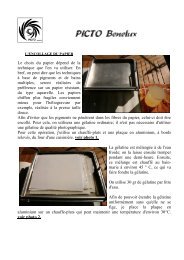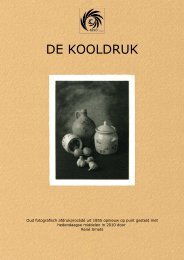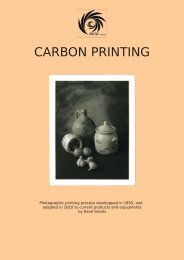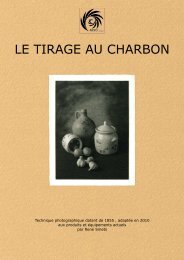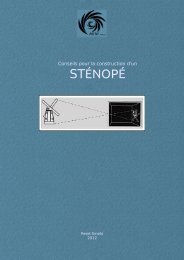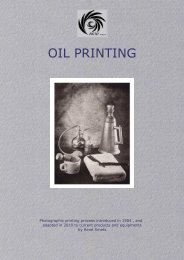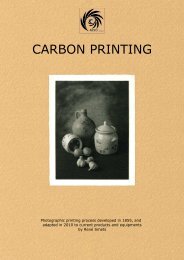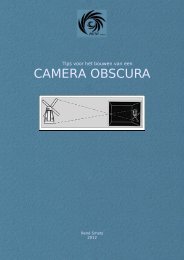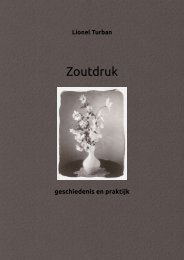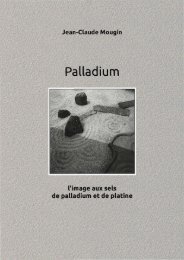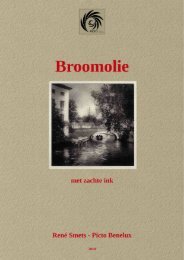Jean-Claude Mougin (pdf) - Picto Benelux
Jean-Claude Mougin (pdf) - Picto Benelux
Jean-Claude Mougin (pdf) - Picto Benelux
You also want an ePaper? Increase the reach of your titles
YUMPU automatically turns print PDFs into web optimized ePapers that Google loves.
5. The World and the Earth<br />
Athena's palladium as well as the "aura" of Benjamin put us on the path of the<br />
origin of art; its roots in the sacred which is the limit of our mortal condition, in a<br />
world that is our residency.<br />
The world, as demonstrated by Heidegger, is the framework gathering those<br />
worldly things: stones, trees, houses, temples, sacred places of worship, herds and<br />
men busy about their business. The setting is the world in which things unfold in<br />
their being of things. It gives the world its image.<br />
In it sings the quartet, the harmony that brings together four in simplicity.<br />
– Land and its free stretch of rocks, sand and water, offering itself as plant<br />
and animal, stay and transhumance for mortals<br />
– The sky and the measurement of the sun, the path of the moon, light and<br />
dusk, the accumulation of clouds and depth of the azure<br />
– The divine and the signs of divinity, their sacred power<br />
– The mortals who in the quartet are those who live and have the custody of<br />
the site: saving the earth and taking care of it, giving free rein to the sky,<br />
and to a fair appreciation of the happy days and seasons, being alert to the<br />
gods' signs, "keeping the mind open for the secret"<br />
In this harmony of the quartet, comes the work of art as object. Quite as the<br />
antique idol, the work of art represents nothing. " The work of art never presents<br />
anything, and this for the simple reason that it has nothing to present, being itself<br />
what initially creates what enters the open for the first time thanks to it". Such is<br />
indeed the mystery of appearing that, in the open, what shows itself stands back<br />
quite at the same time. This conflict is called by Heidegger the "fight of the world<br />
and the earth".<br />
The world in the work of art is what joins, gathers and unifies people in their<br />
history, in their fate. It is what gives its meaning to the work, makes it accessible<br />
to our intelligence, in our desire to understand and to subject it. Because of the<br />
world, the work of art seems bright, obvious to us . It is close.<br />
"Settling a world, the work calls for the earth". The earth is at first the dark<br />
influence of the beginning when the possibilities of the work to come are still<br />
hidden .<br />
It is thereafter the material itself, the marble of the temple, the pigments of<br />
the painting, the metallic thickness of the palladium. The earth is what reaches<br />
the brightness of its appearance in a work, while keeping veiled its secret, because<br />
in the earth something holds on and withdraws and, in its strangeness, remains<br />
inaccessible.<br />
But above this, the earth is the home, the close friend, the regular visitor of our<br />
house. It is the nature where all comes to life, the "phusis" where every thing<br />
9



